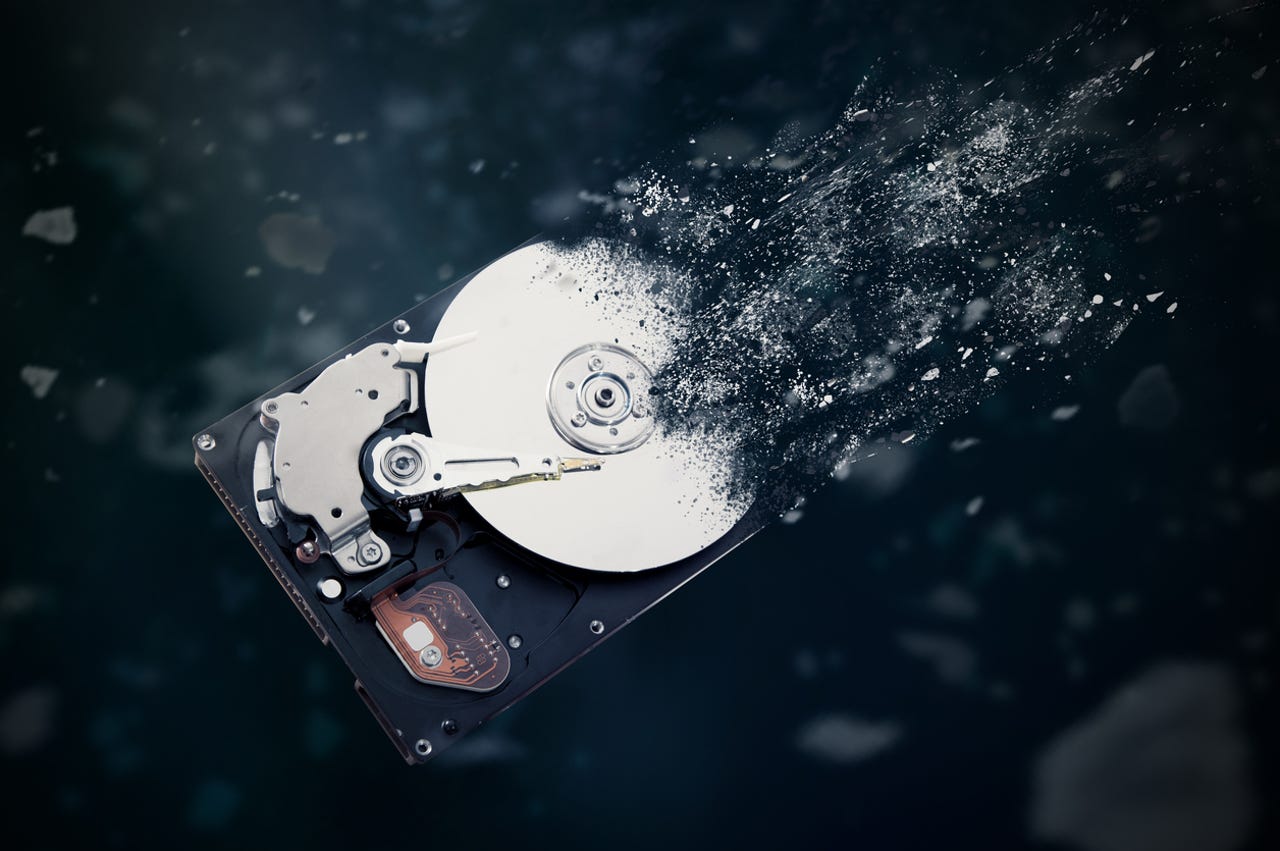US-CERT issues guide on how to properly dispose of your electronic devices


The old hard disk drive is disintegrating in space. Conception of passage of time and obsolete technology
Over the past few years, there have been numerous reports, and studies about how second-hand devices that have been put up for sale still contained information from previous owners, exposing those individuals to scams, blackmailing, or identity theft.
This week, the United States Computer Emergency Readiness Team (US-CERT), a division part of the Department of Homeland Security (DHS), has published an official advisory with instructions and recommendations for properly deleting data from electronic devices that a user wishes to dispose of in one form or another.
These instructions are universal and can be applied to computers, smartphones, tablets, cameras, media players, external storage devices, and even gaming consoles.
Many of these recommendations are also common knowledge for IT industry veterans, but the guide was also written with non-technical users in mind. So let's take a deep dive into the proper device sanitization procedures.
1. Backing up data
The first --and pretty obvious-- step before attempting any device sanitization operation is to back up your data. We won't go too deep into this one. There are various methods and software that can help you with that. Any cursory Google search will unearth hundreds of tutorials for backing up data from almost any type of device, from PCs to gaming consoles.
2. Deleting data
This second step might sound simple, but it's not. Deleting data might not be as trivial as it sounds, and sometimes deleted data still hangs around, depending on your device and its OS quirks, and data may reside in memory cards you forget to pull out of the devices you sell.
- Computers - Use disk cleaning software designed for your OS to permanently remove the data stored on a computer hard drive or other attached storage mediums to prevent the possibility of recovery. There are plenty of open source tools for performing a "secure erase," but some operating systems also come with built-in tools. Check step 3 for some links.
- Smartphones and tablets - Ensure that all data is removed from your device by performing a "hard reset." This will return the device to its original factory settings. Each device has a different hard reset procedure, but most smartphones and tablets can be reset through their settings. In addition, physically remove the memory card and the subscriber identity module (SIM) card, if your device has one, before giving away or selling the device.
- Digital cameras, media players, and gaming consoles - Perform a standard factory reset (i.e., a hard reset) and physically remove the hard drive or memory card.
- Office equipment (e.g., copiers, printers, fax machines, multifunction devices) - Remove any memory cards from the equipment. Perform a full manufacture reset to restore the equipment to its factory default.
It is advised that users don't sell or give away devices that still contain their old memory cards. Memory cards should be pulled from any device. But if you have to, it's advised to delete any data from those cards as well. Attaching the memory card to a card reader or through the device itself, and then connecting it to a PC will let users securely wipe the card.
3. Overwriting your old data
But just deleting your data isn't usually enough. Leftover information can still reside in unallocated storage space. Forensics software can help buyers or new owners investigate old devices for any data that was left over on a device's storage.
To prevent attackers from recovering any old files, it is recommended that users overwrite storage devices with random binary data.
Windows has a built-in utility that can do this, named cipher.exe, but users can also use the "format" command with special parameters.
Macs also have a built-in feature to securely wipe and overwrite any attached storage, while on Linux there a tool named shred that can help users delete and overwrite data with one command.
Don't forget. Don't just overwrite hard drives. This operation can also be performed on USB thumb drives, memory cards, network attached storage (NAS) devices, and other storage systems.
4. Destroying
If you're selling or handing down your device, this step is obviously optional. But if you're working for a company or performing a Mr. Robot-like wipe down, here's what US-CERT recommends in the case you need to physically destroy your old equipment, for legal or compliancy reasons.
"Physical destruction of a device is the ultimate way to prevent others from retrieving your information. Specialized services are available that will disintegrate, burn, melt, or pulverize your computer drive and other devices. These sanitization methods are designed to completely destroy the media and are typically carried out at an outsourced metal destruction or licensed incineration facility. If you choose not to use a service, you can destroy your hard drive by driving nails or drilling holes into the device yourself. The remaining physical pieces of the drive must be small enough (at least 1/125 inches) that your information cannot be reconstructed from them. There are also hardware devices available that erase CDs and DVDs by destroying their surface.
- Magnetic media degaussers. Degaussers expose devices to strong magnetic fields that remove the data that is magnetically stored on traditional magnetic media.
- Solid-state destruction. The destruction of all data storage chip memory by crushing, shredding, or disintegration is called solid-state destruction. Solid-State Drives should be destroyed with devices that are specifically engineered for this purpose.
- CD and DVD destruction. Many office and home paper shredders can shred CDs and DVDs (be sure to check that the shredder you are using can shred CDs and DVDs before attempting this method)."
A NIST guideline from 2014 also provides additional instructions, if you have the time to go through 64 pages of more technical information.
If not, the instructions put forward by US-CERT should be more than enough. The advice is sorely needed, as several studies and surveys from past years have proven that many users tend to forget to wipe data from their devices:
- A 2010 survey revealed that 50% of the second-hand mobile phones sold on eBay came with files and data on previous owners.
- A 2012 survey conducted by the UK's Information Commissioner's Office (ICO) showed that one in ten second-hand hard drives still contained data from previous owners.
- A 2015 study found that three-quarters of used hard drives contained data from previous owners.
- A 2018 study by the University of Hertfordshire revealed that almost two-thirds of second-hand memory cards still contain data artifacts from previous owners.
Simple steps to erase your digital footprint
RELATED COVERAGE:
- What is ransomware? Everything you need to know about one of the biggest menaces on the web
- How to clear storage space on your PC for Windows 10 updates TechRepublic
- What is deep learning? Everything you need to know
- How to back up your Mac CNET
- What is malware? Everything you need to know about viruses, trojans and malicious software
- What is GDPR? Everything you need to know about the new general data protection regulations